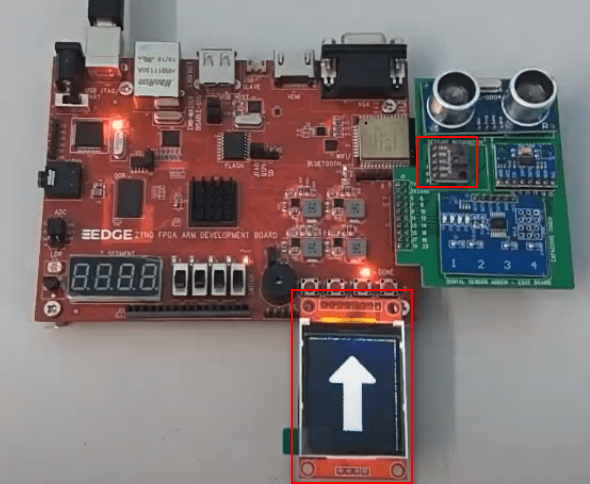Gesture sensor is based on PAJ7620U2 that integrates gesture recognition function with general I2C interface into a single chip. It can recognize 9 gestures including moving up, moving down, moving left, moving right, etc with a simple swipe by your hand. Gesture sensor comes with the Edge ADD-ON board.
The ST7735 TFT display is a 1.8″ display with a resolution of 128×160 pixels and can display a wide range of colors (full 18-bit color, 262,144 shades!). The display uses the SPI protocol for communication and has its own pixel-addressable frame buffer.

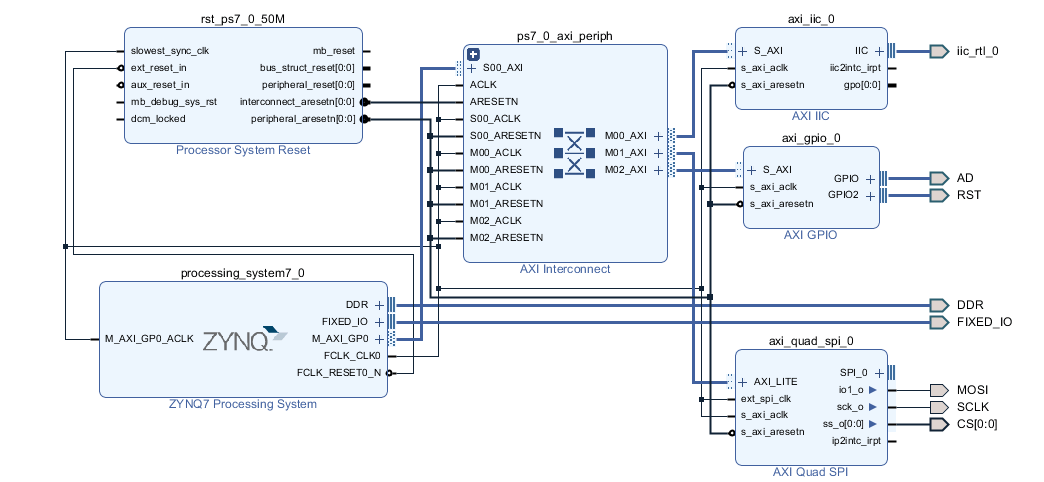
Gesture sensor communicates with FPGA via I2C interface. So we have used AXI I2C IP block. There are two pins such as I2C SDA and I2C SCK. Both are assigned with gesture sensor.
TFT display communicates with FPGA via SPI interface. So we have selected AXI quad SPI IP block. There are three SPI pins such as MOSI, CS and SCLK connected. MISO pin is not required in this application.
AXI GPIO block is connected with AD and reset pin of TFT display.
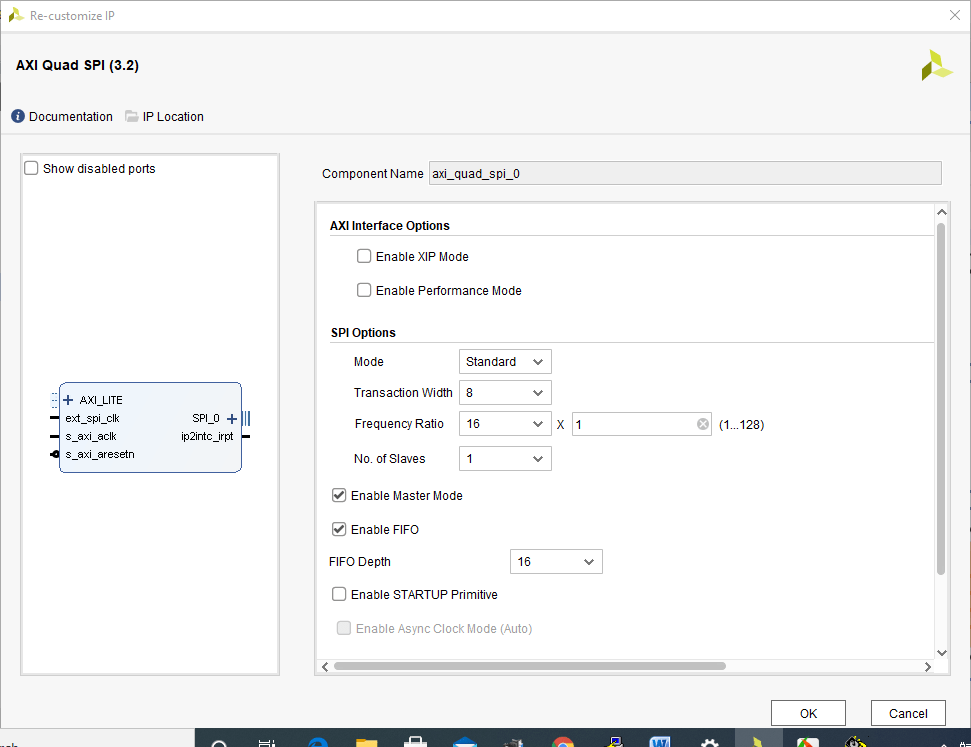
SDK Application development
Open the SDK. In TFT_gesture application project, added delay.c, delay.h,font12.c font16.c, font20.c,font24.c,font8.c,fonts.h,LCD_Driver.c, LCD_Driver.h,LCD_GUI.c, LCD_GUI.h, PAJ7620U2.h, spi.c, spi.h and main.c
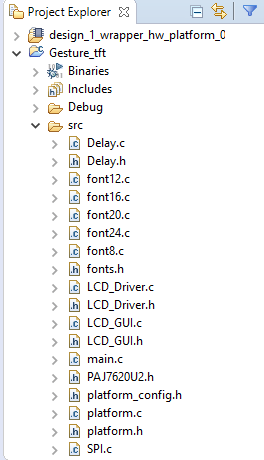
On-board verification
Connect the board, TFT display and Edge Add-on board as shown
Below.
Click on the program FPGA symbol to download the bit file.
Now, the done LED will be ON
Click on the TFT_GESTURE application project ->Run us ->
Launch on hardware ( system debugger) as shown below.
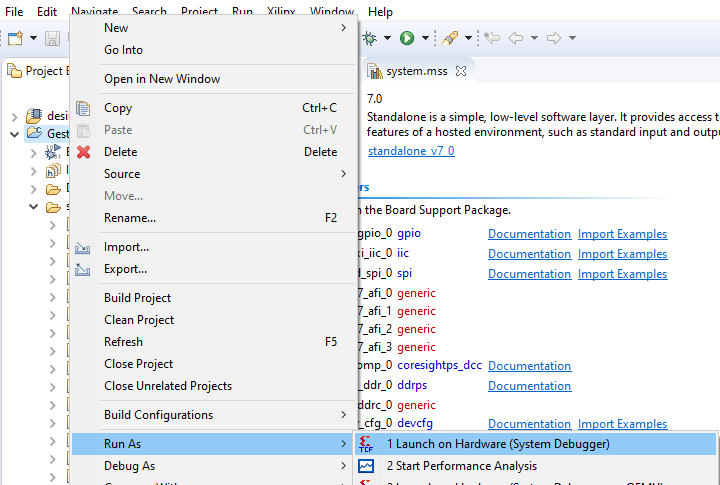
After the program runs, do the gesture on gesture sensor like up, down, left, right,forward, backward, clockwise and anticlockwise. The respective gesture will be shown on TFT display.
